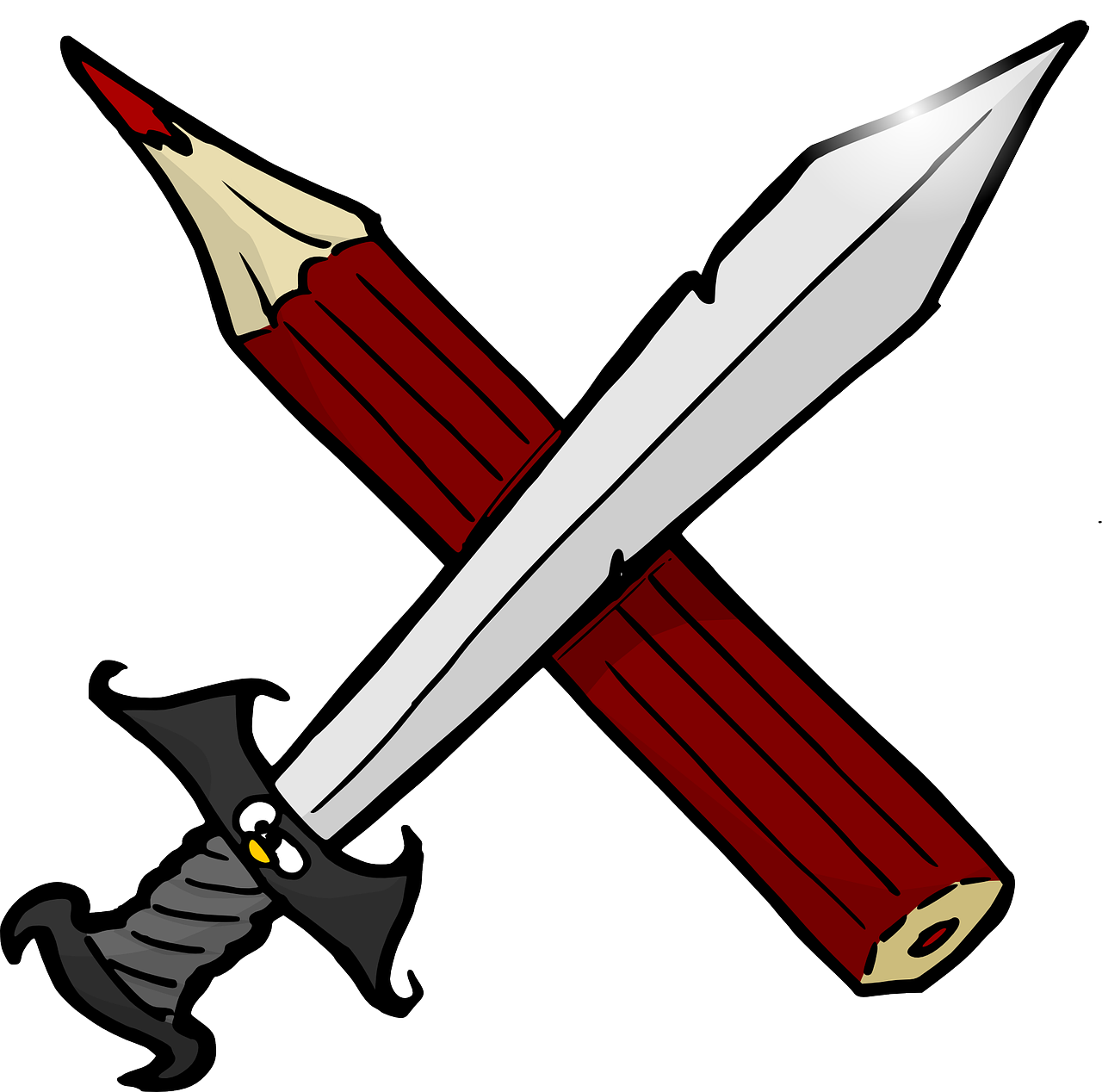
Yes, I adore my dice. And I have lots of them. Including several sets of polyhedral dice in unusual colors/patterns to suit my moods when I play D20 games like D&D or M&M – and possibly enough D20 Radio six-siders to supply a group of WEG Star Wars players. I also have a bunch of what have become some of my favorites – the narrative dice used in Fantasy Flight Games’ Star Wars RPG lines. Narrative dice, unlike most polyhedral and 6-sided dice, have symbols rather than numbers and, in addition to success/failure (yes/no) results affect the story in various ways, positive and negative, or both (from the players’ point of view). The two best-known of these are Fantasy Flight Games’ Star Wars and Warhammer 3e RPG lines.
First, a semantics note. Unlike my opposite number, Kyle (who ably champions numbered dice here), I do not consider Fate dice* to be narrative dice. Although these 6-sided dice use symbols not numbers, those symbols represent integers (- = -1, blank = 0, + = +1), which is no different than using pips instead of Arabic numerals on a traditional 6-sided die, thus producing a numerical result. You roll 4 Fate dice, getting a result of -4 to +4. This numerical result is used only to determine success or failure, and the degree of success.
So, on to the virtues of actual narrative dice. To begin with, I find that narrative dice seem to speed up encounters, especially combat, not bog them down, a complaint I have read several times. For example, in a typical “number” system, you roll the dice for your attack. Then the GM consults at least one chart to find out if it hit. Then you figure out the damage dice.
Similar for skill/power checks, since skills and powers can have varying degrees of effect, depending on the same or a second roll. (E.g., degrees of success/failure in Mutants and Masterminds or the levels of effect mini-charts for certain skills in d20 Star Wars RPGs). Compare to FFG Star Wars, where I roll one dice pool for my attack – and the damage is right there on the rolled dice if I hit. No second roll and/or chart-reading, just onto the next character. The appeal of this streamlining is not lost on those who play number systems. Long before I heard of narrative games and dice, I read advice suggesting damage dice be rolled along with attack dice to speed up combats by having the damage available if the GM said you hit. And faster combats means more encounters and thus more fun per session.
Another complaint I have read is that narrative dice over-complicate or “make things more complex” because the symbols allow the dice other effects than success/failure, while numerical dice are “simpler.” Yes, the narrative dice do provide other info. As Jay Little, designer of FFG’s Star Wars and Warhammer narrative systems, explains, the Setback/Boost dice show how advantages and disadvantages affect the chances of success at a task/attack. Ability dice likewise represent innate abilities, Challenge extra risk, etc. These don’t over-complicate a check any more than a +/-2 circumstance modifier, +X for an extra training-type feat and another +2 for a second feat over-complicates a skill check in a d20 game. Having just done the skill bonuses for some RCR and Saga Edition Star Wars NPC stats, I can tell you that all the arithmetic for that numeric roll complicates things far more than symbol-covered dice.
And while we may be familiar with Arabic numerals since toddlerhood, we still have to learn the mechanics of the game. I recently was introduced to Mutants and Masterminds, which uses a d20 for everything. Yes, I knew the numbers on the dice – but it still took me a session or two before I got straight what to do with those familiar numbers to give the GM the final result. It was no more difficult for me to learn to tell the difference between SW symbols than to learn how to do the various M&M rolls.
Finally, there have been arguments that it’s much harder to do encounter design with narrative games. I have not found that to be true. I have GM’d both OCR/RCR Star Wars and AD&D in the past, experiences so bad that I swore off GMing for at least a decade. Looking back, one of the reasons was that I had so much trouble designing encounters. All the numbers and statistics did not help me at all. When FFG Star Wars got me interested in giving GMing another try, I realized that encounter design in this system came easier to me than in numerical systems. Focusing on what percent of the time a PC with X bonus to Skill A or Ranged Attack B would succeed against Challenge Type Y just left me frustrated – and I got a B in Statistics! With FFG SW I was able to focus on what the PCs needed to do, how hard that would be and what things would help or hinder them. Just recently, I began to get how to alter an encounter on the fly, although admittedly I still do not “wing it” well. But I am sure I wouldn’t even try were it not for the ease of narrative encounter design and prep.
After all this debate, I have concluded that what really matters to me when I am playing an RPG isn’t what kind of dice I am rolling. It’s how much fun me and my friends are having.
*Aka Fudge dice for the FUDGE RPG system, created in 1992, for which these dice were originally designed and used.
References: “That Star Wars Feeling” Fantasy Flight Games, February 13, 2013
Force and Destiny, Fantasy Flight Games, (c) Lucasfilm Ltd. & TM, 2015. Pp. 16-21, 24-34, 316, 318-319
Fate Core System, (c) Evil Hat Productions, 2013. Pp. 8-11
“WFRP 3e for Forum-Based Gaming”
Fudge (role-playing game system)
